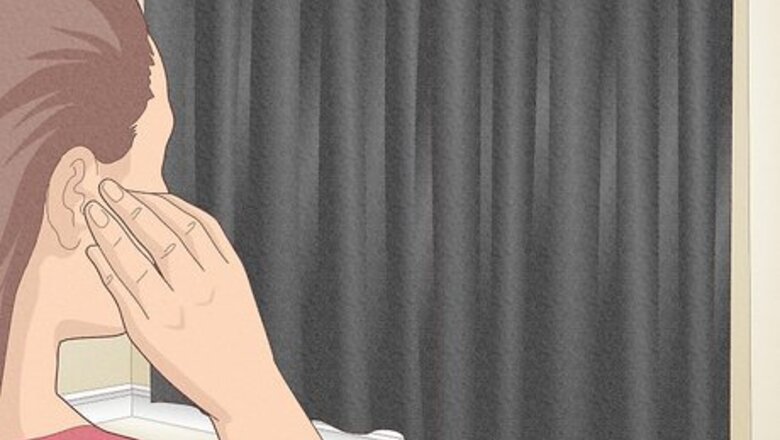
views
- Push bookcases against the wall or install acoustic wall panels. This allows your walls to absorb more sound, making your room quieter.
- Avoid annoying buzzing noises by mounting items that could shake, like a stereo. When you do this, make sure to use insulation pads, too.
- Fill your walls with damping compound, then cover them with soundproofing panels. This takes more work, but it's very effective.
Easy Methods

Install sound curtains or thick blankets. You can absorb a little sound by mounting thick blankets to the wall. If you're willing to spend a little money, purchase heavy sound curtains instead. If you have thick, insulated walls, this will have little additional effect.

Use bookcases. You can make walls thicker and more soundproofed by simply making use of bookshelves. Cover a wall in bookshelves and books for a fairly effective sound barrier. Plus, you get a nice library out of the deal.
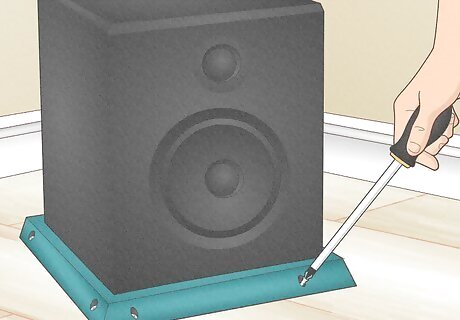
Mount shaky items. Have you ever had a neighbor turn their music up really loud and noticed that buzzing, rattling vibration sound more than anything else? Yeah, that’s why you’re going to want to mount items like speakers. Use vibration insulation pads when mounting to keep items like speakers from annoying everyone around you.
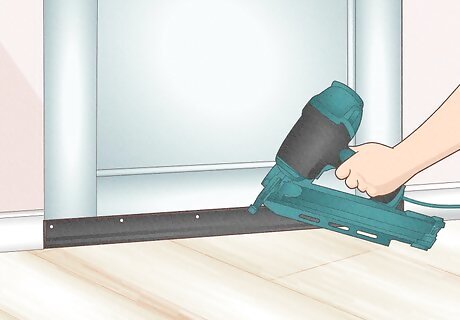
Install a door sweep. Nail this rubber loop to the base of a door to block the gap. If the gap is too large to cover with a sweep, nail a strip of lumber to the base of the door first.
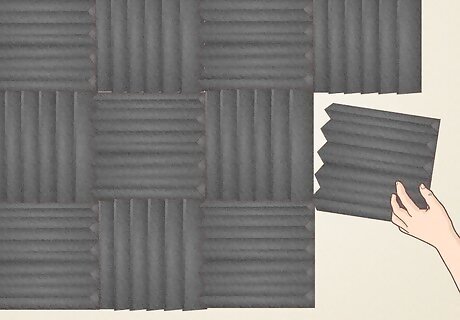
Use acoustic wedges panels. Purchase 12"x12" panels with a 2" depth curve relief. These do well to absorb low to high frequencies. Some panels come already with an adhesive peel. Use 3M spray adhesive to glue the panels to the walls and ceiling if it doesn't come with adhesive peel. You can cover all or just parts of the surface, depending on the amount of dampening you desire. This cuts down on the 'noise' inside the room and keeps your ears happy, especially if it is music rehearsal space. Use a panel that is mostly fiberglass with a thin Mylar perforated facing. These types of panels have the highest ratings in sound absorption values among almost all but the most expensive specialty tiles. They will give you far more bang for buck than any other on the market.
Soundproof Construction
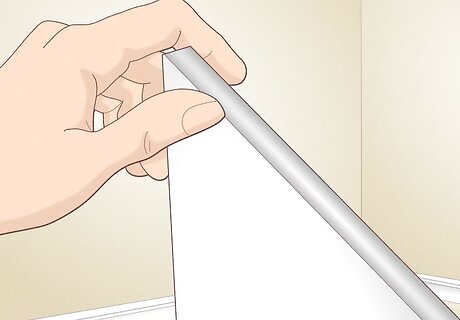
Use thick material. The thicker and denser the material, the more sound it will absorb. Consider using ⅝" (1.6 cm) drywall instead of the thinner sizes You could also use concrete or brick, if that's an option. If you are improving on an existing wall, build a basic wall frame and attach it to the surface, anchoring it to the existing studs. Cover this with a new layer of drywall or sheetrock—or even multiple layers of drywall, for the best results.

Separate the two layers of wall. Whenever sound travels into a new substances, some of its energy is absorbed, and some is reflected. Increase this effect by building the wall from two sheets of drywall or sheetrock, with as much space between them as possible. This is called decoupling. Decoupling actually makes the wall worse at blocking low frequencies, due to the resonance of the wall. If the gap is only 1 inch (2.5 cm) or less, a damping compound is highly recommended to fight this effect. Try adding mass and dampling glue. "Wanting to muffle an annoying neighbor's rooftop AC unit, the pointers on material density and decoupling principles outlined my next steps. With a plan to add mass and damping glue, I'm hopeful their unit will finally fade into the background!" - Alec S. Carpet and drywall can help. "With a bedroom, unfortunately, under a frequently used room, I read carefully to learn preventative approaches. Adding carpet and an extra drywall layer helped block footsteps and voices above for some overdue quiet nights." - Mel Schmidt (wikiHow Community Member) Your recording studio is ready to be built. "Researching how to soundproof a basic recording area, the instructions moved logically from entry-level acoustic treatment to more robust construction techniques. I grasped this intricate concept well enough to build my own booth!" - Alexander M. Wall studs and insulation can be game-changers. "Wanting to reduce sound transmission from the room above ours, I appreciated the tailored advice on staggered wall studs and extra insulation. With a plan tailored to our personal nuisance, I finally see an end to the stomping!" - Jerry W. Diagrams can cement comprehension. "Trying to muffle noise transmission to neighbors, the tips resonated more with the addition of clear diagrams. Now I visualize solutions better, like remembering bookshelves and sound panels absorbing rather than reflecting sound." - Michael J. Have a story our readers should hear? Share it with 1 billion+ annual wikiHow users. Tell us your story here.
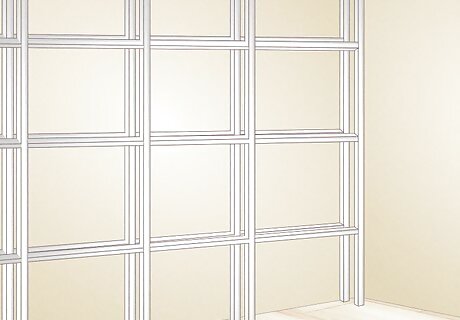
Plan your stud placement. Most walls contain a single row of studs touching both layers of wall. Sound travels easily through these studs, which can cancel out a great deal of work. When building a new wall, choose one of the following stud placements instead: A double row of studs, one along each interior side. This is the most soundproof method, but requires enough space to leave a gap between the two rows. A staggered row of studs, alternating placement along one interior side, then the other.
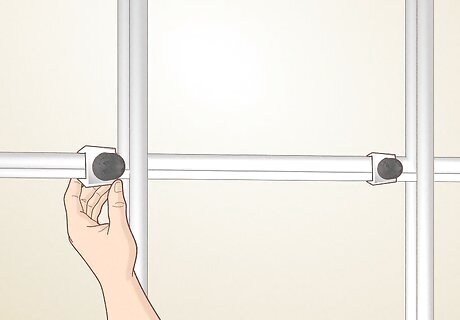
Consider sound clips or channels. These are placed between the studs and the drywall, providing an additional barrier for sound. There are two main options: Sound clips are the most effective method, absorbing sound with heavy rubber components. Screw them into the studs, insert a hat channel, then screw the drywall into the channel. Resilient channel is a springy metal channel designed for soundproofing. Screw this to the studs and drywall using offset screws. This may improve high-frequency blocking at the expense of low frequencies. Note that hat channels are not effective at sound proofing.
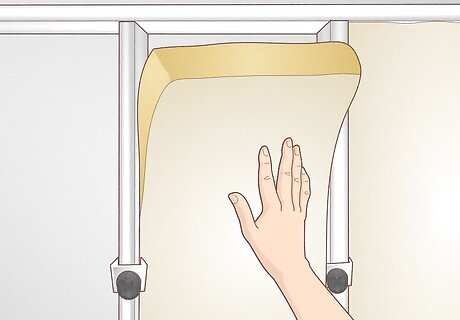
Fill walls with a damping compound. This magical substance converts sound energy to heat. This can be used between layers of wall, floor, or ceiling. Unlike most other methods, this should absorb low-frequency noise. This makes it ideal if you expect loud bass from music and home theater systems. This is also sold as noise proofing glue or viscoelastic adhesive. Some of these compounds may take days or weeks to "cure" to their full potential.
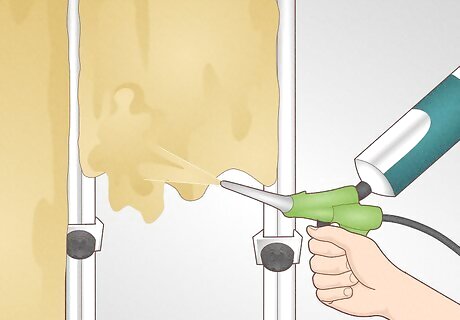
Insulate with other material. Damping compound is one of the best all-purpose soundproofers, but there are many other insulation materials. Fiberglass is cheap and fairly effective. Try using spray foam or cotton batt insulation in your wall cavities to help block sound.
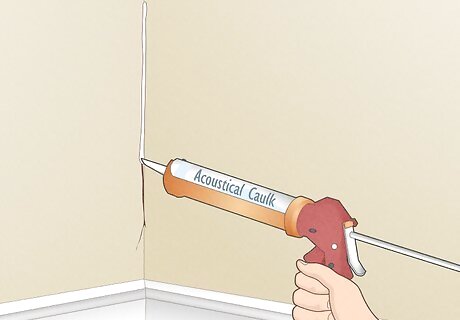
Fill cracks with acoustical caulk. Even small cracks and gaps between materials can undermine sound proofing. Special acoustical caulk (also sold as acoustical sealant) fills these gaps with an elastic, sound-resistant material. Fill all cracks, as well as seams around the walls and windows. Keep the following in mind: Water-based caulks are easier to clean up. If using a solvent-based caulk, check the label to make sure it won't harm your materials. If the caulk doesn't match the wall color, choose one that specifically says it can be painted over. Consider using normal caulk for the smallest cracks, since acoustical caulk is more difficult to handle.
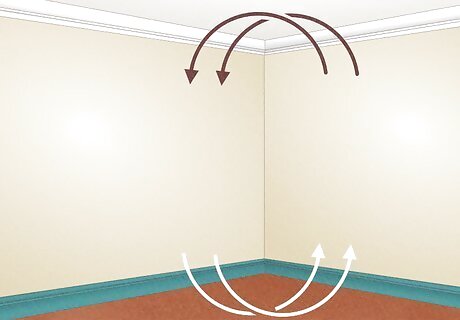
Soundproof floors and ceilings. Floors and ceilings can be soundproofed using many of the same systems suitable for walls. Most commonly, homeowners add an additional layer (or two) of drywall, with dampening glue in between. As a simple additional step, cover the floor with soundproofing mats, then install carpet. You do not need to soundproof the floor if there is no room below you. Heavy concrete ceilings won't benefit much from the additional mass of drywall and damping compound. Instead, add a drywall layer with an air gap in between, or fill the gap with fiberglass insulation.
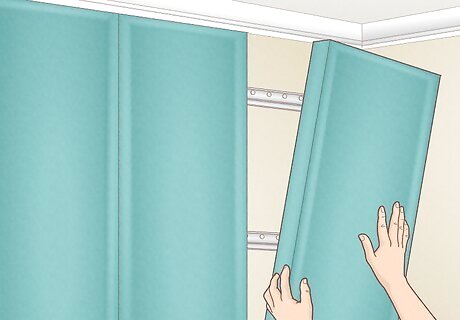
Install soundproofing panels. If the soundproofing in your completed room is not substantial enough, you can also use acoustic panels. Cheap options are available, but the more expensive panels may be more effective. Be sure to attach these to wall studs or other strong structures.
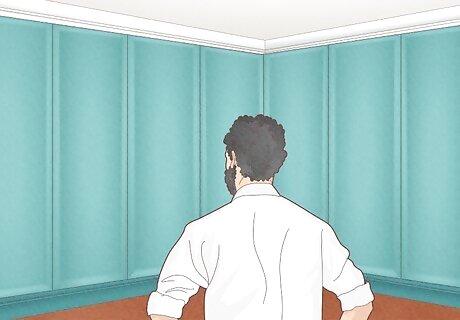
Finished.




















Comments
0 comment